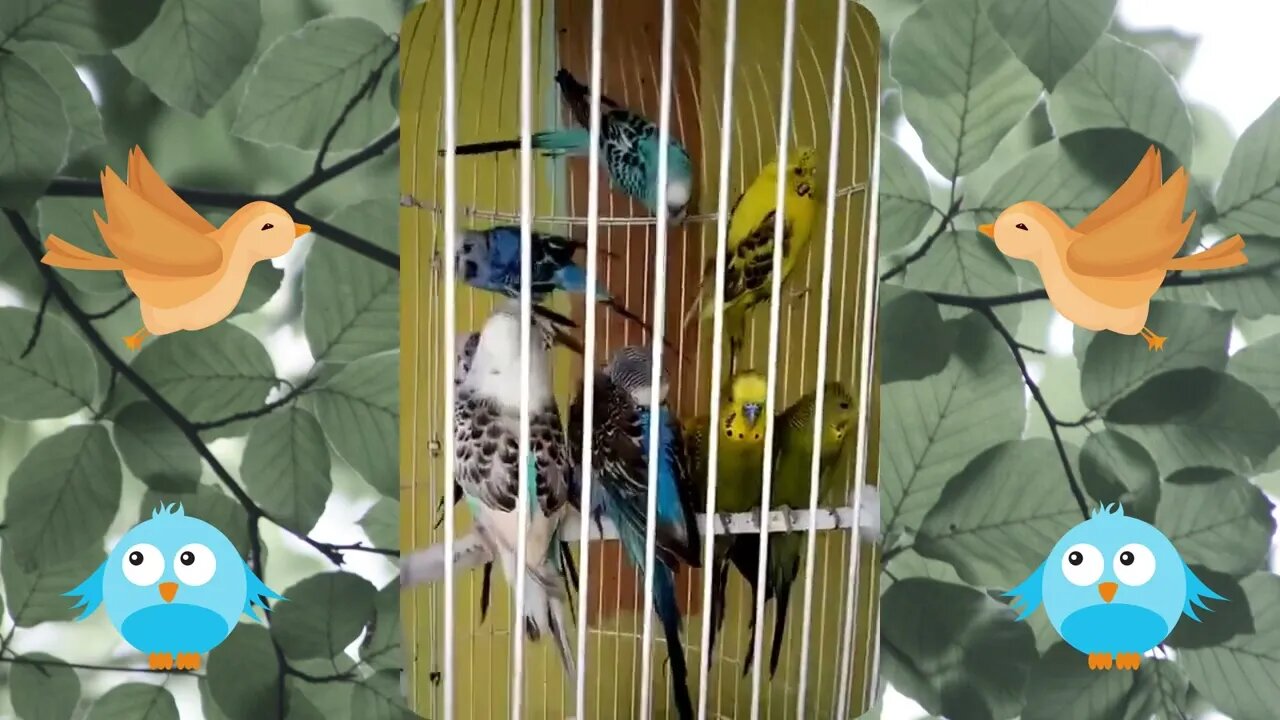Premium Only Content

Love Birds Chit Chat Bird Lovers
Although it is one of the smaller parrot species that may be kept as a companion pet, a lovebird is an inquisitive and active bird that seems to be always on the go. Lovebirds are well-known for the affectionate and attentive bonds that they often develop with the partners in their lives, which is where they get their moniker.
Lovebirds get their moniker from the strong pair relationships that they have with one another. Lovebirds may vary in size from little more than 5 inches to slightly more than 612 inches, placing them among the most diminutive kinds of parrots. In contrast to budgies, often known as "parakeets," which have long, pointed tail feathers, lovebirds have shorter, rounded tail feathers. Lovebirds are considerably bulkier than budgies.
In the wild, lovebirds congregate in small groups and consume seeds in addition to a variety of fruits, vegetables, and grasses. The Abyssinian, also known as the black-winged lovebird, has a very specific diet that incorporates local figs, which is one of the reasons why they are so difficult to keep as pets.
Lovebirds, like most other kinds of birds, need plenty of activity and should have the biggest cage that you can provide for them given the constraints of your finances and living quarters. Lovebirds that spend their whole lives confined in a tiny cage with little opportunity for exercise or exploration are more likely to develop neurotic behaviors and may even engage in self-mutilation.
Toys are an absolute need for these energetic parrots. Always keep in mind that lovebirds are powerful chewers, and choose toys for them that can withstand their gnawing without posing a threat to their health. A lovebird's lifespan may range anywhere from 12 to 15 years or even longer with the right level of care and nutrition.
Despite their little size, lovebirds are fearless, inquisitive, and fascinating creatures that are always on the go. Many people are under the impression that lovebirds travel in pairs because they often come across photographs that show two lovebirds nestled up against one another. There is no question that a lovebird will often develop a close relationship with another lovebird.
However, prospective owners should be warned that a lovebird couple will be intensely focused on one another, and as a result, they may choose not to engage in social behavior with other individuals. A single lovebird companion requires a significant amount of social engagement with the people in his or her life, in addition to a significant amount of busy work in the form of toys and other objects that are safe to chew up and damage. A female lovebird may become quite possessive and aggressive in defense of her territory (cage).
Lovebirds are a vocal group that may be heard whistling and singing throughout the day. Check out this movie on YouTube that was uploaded by Relax With Nature and features an hour of the sounds of lovebirds. The early morning and late evening hours are the most active times for lovebird song.
Because they make such a racket, you may assume that lovebirds can communicate verbally. Well, lovebirds hardly never communicate in the manner that you anticipate them to. They converse with one another more than they do with other individuals. Despite the fact that they are not recognized for their ability to converse, their song is rather nice, more so than the songs of many other companion parrots. The more lovebirds you have—and it's impossible to purchase just one of them—the louder they will grow. They are social birds that congregate in large groups in the wild and like carrying on conversations with one another.
-
 56:14
56:14
PMG
17 hours ago $0.06 earnedHannah Faulkner and John Strand | BLANKET PARDON FOR ALL J6er's
1.61K2 -
 48:51
48:51
State of the Second Podcast
14 hours agoWhy Does Palmetto State Armory Keep Winning?
1.57K2 -
 32:01
32:01
SB Mowing
25 days agoHer Tears Said It All: “My Prayers Have Been Answered”
25.6K35 -
 3:28:55
3:28:55
Price of Reason
13 hours agoTrump Means Business! Disney's F4 Hail Mary Pass! Assassin's Creed Shadows Art Book SUCKS?
64.1K14 -
 8:00:07
8:00:07
SpartakusLIVE
12 hours ago#1 Shadow BANNED Hero
37.6K -
 2:17:46
2:17:46
Kim Iversen
12 hours agoTrump To SMUG Netanyahu: Let's Clear “All” Palestinians From Gaza! | RFK Jr, Tulsi Move On To Round Two
85.6K448 -
 30:25
30:25
Standpoint with Gabe Groisman
1 day agoDemocrats Are Stalling Trump Appointments with Senator Rick Scott
101K24 -
 1:00:24
1:00:24
The StoneZONE with Roger Stone
12 hours agoAnthony Fauci’s Brutal History Of Animal Torture Exposed! | The StoneZONE w/ Roger Stone
72.6K20 -
 1:03:38
1:03:38
Man in America
13 hours agoUSAID Corruption, $21 TRILLION Missing, & the End of the US Global Empire?
101K70 -
 56:38
56:38
Flyover Conservatives
14 hours ago6 Steps to Take Advantage of Trump’s New Golden Age! - Clay Clark | FOC Show
61.3K2